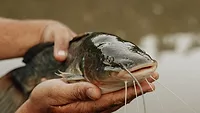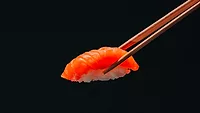EFSA: Most Farmed Fish Eaten in EU Are Free of Infectious Parasites, But Not All

Image credit: Bob Brewer via Unsplash
According to a recent evaluation conducted by the European Food Safety Authority (EFSA), many of the most commonly farmed and consumed fish in the EU/European Economic Area (EEA) show no evidence of parasites that can infect humans, but at the same time, parasites were found in some farmed species and more data is needed to determine how prevalent certain parasites are in farmed fish.
For the assessment, EFSA used new methods to detect zoonotic parasites, like ultraviolet (UV) scanning, and optical, molecular, and OMICs technologies. The researchers also tested methods for the inactivation of parasites, and determined that thermal treatments remain the most effective. Ongoing research will continue to explore other processing techniques for parasite inactivation, such as high-pressure processing (HPP), pulsed electric field processing, air drying, dry salting, double salting, and the application of natural compounds.
Some of the prevalent types of farmed fish that were found to be parasite-free include Atlantic salmon, rainbow trout, gilthead seabream, turbot, meagre, Atlantic halibut, carp, and European catfish. However, parasites like Anisakis and others were found in European seabass, Atlantic bluefin tuna, cod, and/or tench produced in open offshore cages or flow-through ponds.
Overall, EFSA determined that fish produced in closed recirculating aquaculture systems with filtered water intake and heat-treated feed are almost certainly free of zoonotic parasites. The agency calls for more research into the prevalence of specific parasites in selected fish species, farming systems, and production areas within the EU/EEA.
Before the end of 2024, EFSA will produce findings about the risks posed by the presence of zoonotic parasites contaminating wild fish species from specific fishing areas.
Looking for quick answers on food safety topics?
Try Ask FSM, our new smart AI search tool.
Ask FSM →









